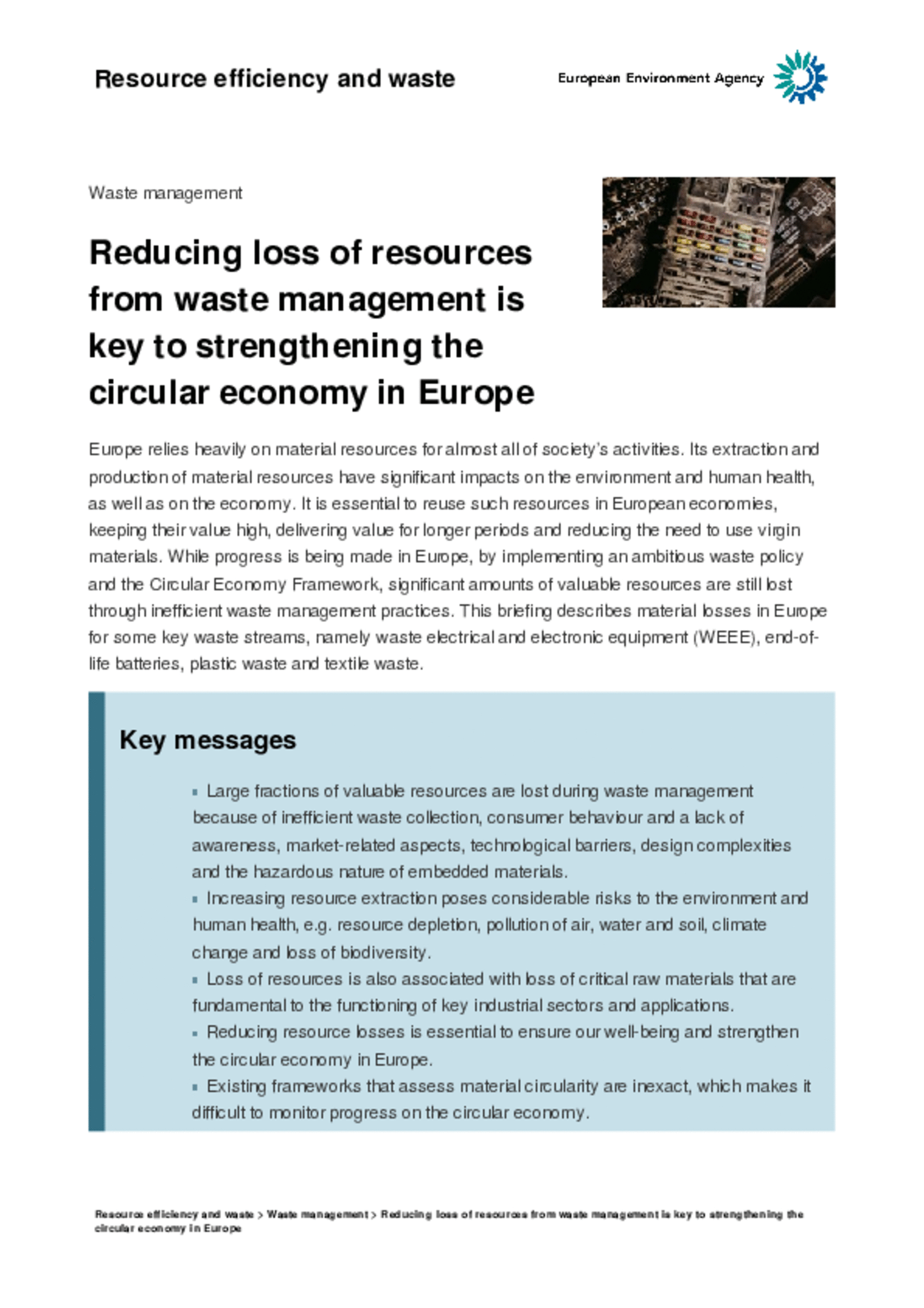All official European Union website addresses are in the europa.eu domain.
See all EU institutions and bodiesBriefing 8/2019
Europe relies heavily on material resources for almost all of society’s activities. Its extraction and production of material resources have significant impacts on the environment and human health, as well as on the economy. It is essential to reuse such resources in European economies, keeping their value high, delivering value for longer periods and reducing the need to use virgin materials.
While progress is being made in Europe, by implementing an ambitious waste policy and the Circular Economy Framework, significant amounts of valuable resources are still lost through inefficient waste management practices. This briefing describes material losses in Europe for some key waste streams, namely waste electrical and electronic equipment (WEEE), end-of-life batteries, plastic waste and textile waste.
ISBN: 978-92-9480-104-3
- (current) Reducing loss of resources from waste management is key to strengthening the circular economy in Europe - 28 October 2019

